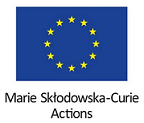T-LICS: Transfer of Linguistic Intonation in Contact Situations

Specific programme: Marie Sklodowska-Curie Individual Fellowships (IF)
UPV/EHU Partner Status: Coordinator
UPV/EHU PI: Gorka Elordieta
Project start: 01/10/2019
Project end: 01/04/2022
Brief description: Languages often come into contact, as witnessed by the wide spread of bilingualism across the world. Whenever language contact takes place, there emerges the possibility of features from one language being transferred to the other one. This transfer is often illustrated by loanwords, but it can involve any aspect of a language, like syntactic or phonological patterns. In this context, the T-LICS project will develop a general theory of how intonation features are transferred, through meta-analysing previous studies and original fieldwork. Although every language uses pitch in a conventional way in order to convey sentence-level meanings, such as the contrast between statements and questions, intonation is rarely recorded in written texts, and is underrepresented in descriptive grammars. The project, hence, devotes its empirical core to a notable case of intonation contact, where a previously-homogeneous sub-dialect of Basque is coming into increasing contact with French or Spanish. We will conduct fieldwork and analyse how the intonation system of younger (vs older) speakers is diverging at each side of the political border. By further comparing these patterns to their French/Spanish intonation, we will identify which features from their Basque intonation are attributable to transfer from the other language. Beyond standard phonetic/phonological analysis, the project will also exploit machine learning techniques to quantify the extent of the intonation divergence between the two generations of speakers (using classification accuracy), and the extent of intonation overlap within these bilingual speakers (using clustering techniques). In order to complement and expand the field data, we will also crowdsource intonation patterns using a mobile app, a recent and successful tool in dialectology which has not been employed yet to study intonation.
